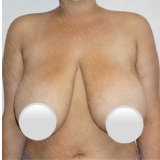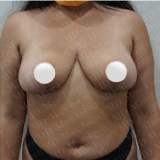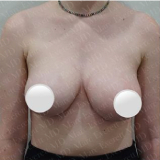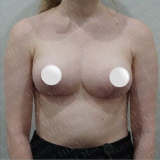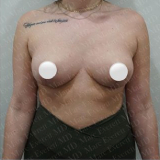New York Botox and Dysport
Consultations offered at our two convenient locations in Manhattan, NY and Queens, NY

Botox and Dysport are two brands of FDA-approved injectable neuromodulators commonly used to treat cosmetic concerns in the face. Unlike injectable fillers that fill in wrinkles and fine lines, neuromodulators work to safely immobilize the small facial muscles responsible for creating folds and creases in the skin. Botox and Dysport can be used to:
- Treat forehead wrinkles, including glabellar lines between the eyebrows
- Eliminate crow’s feet around the corners of the eyes
- Correct facial asymmetry created by soft tissue imbalances or a previous injury
- Reduce a “gummy smile” caused by the excessive visibility of the gums
- Manage chronic migraines on a 10- to 12-week basis
Dr. Marc Everett wants to improve your overall quality of life. In addition to addressing age-related cosmetic concerns to restore your self-confidence, our experienced staff can utilize injectable neuromodulators to treat debilitating chronic migraines.
Contents [hide]
- 1 The Procedure
- 2 Botox vs. Dysport
- 3 Recovery & Results
- 4 FAQ
- 4.1 Can Botox and Dysport treatments be combined with injectable fillers?
- 4.2 What’s the difference between injectable neurotoxins and injectable fillers?
- 4.3 Is there any downtime associated with Botox and Dysport treatments?
- 4.4 Can Botox and Dysport treatments be combined with injectable fillers?
- 4.5 What’s the difference between injectable neurotoxins and injectable fillers?
- 4.6 Is there any downtime associated with Botox and Dysport treatments?
- 4.7 Who is a good candidate for Botox and Dysport treatments?
- 4.8 Which is better for me: Botox or Dysport?
The Procedure
Botox and Dysport appointments are quick and straightforward, lasting an average of 15 to 30 minutes. For patients interested in using injectable neuromodulators for treating wrinkles and fine lines in the face, a series of injections are made in the targeted area to immobilize the muscles. Once the necessary volume of the product has been administered, patients are free to leave the office and return to work or other responsibilities.
For patients interested in using neuromodulators to correct facial asymmetry, the Botox or Dysport will be carefully injected to immobilize muscles in the asymmetrical side of the face. Once administered, the product will relax and loosen the muscles, introducing more balance and symmetry to the face.
For patients with chronic migraines seeking treatment through Botox, appointments will last about 20 minutes. Using a series of 31 injections in seven different regions of the neck and face, Botox can reduce the number of migraines experienced per month by half. Botox is FDA-approved to treat chronic migraines, but patients are only eligible for chronic migraine treatments if they experience headaches at least 15 days per month, lasting for four hours or more at a time. Appointments need to be scheduled every 10 to 12 weeks to maintain results.
Overall, Botox and Dysport treatments are fast and relatively painless. The injections are made using very fine needles, and most patients find the treatment to be comfortable, although numbing cream and ice may be used to increase patient comfort during the procedure.
Botox vs. Dysport
Botox and Dysport are both derived from a neurotoxin called botulinum toxin type A. When injected into muscles in small amounts, botulinum toxin blocks the signals sent from the brain to create movement, causing a safe and temporary paralysis that prevents wrinkles from forming.
While similar, Botox and Dysport have subtle differences that make them distinct products. Dysport tends to show quicker results, with patients experiencing wrinkle reduction in as little as two days. Patients receiving Botox treatments typically see results in five days. Dysport also has a smaller molecule size that requires more product volume to achieve desired results but may produce a lighter, subtler change in appearance that some patients find preferable.
Both products can be used to treat fine lines and wrinkles with effective results, and Dr. Marc Everett explains the differences and benefits from each product before making a decision on which option is best for their patients.
Recovery & Results
Common side effects of Botox and Dysport treatments are minimal and consist of swelling, bruising, and redness at the injection sites. All side effects are minimized with the help of an experienced injector, and most patients leave their appointments without telltale signs of the treatment.
Results will depend on the product used, with Botox patients seeing results in four to seven days and Dysport patients experiencing visible improvement in two to five days. Once injected, the body will naturally and harmlessly absorb the neurotoxin over a period of three to four months. To maintain results, patients should plan on scheduling their appointments every three months. Patients seeking treatment for migraines will need to schedule appointments every 10 to 12 weeks for continuous migraine relief.
FAQ
Can Botox and Dysport treatments be combined with injectable fillers?
Absolutely. Many patients are interested in targeting wrinkles throughout the face and choose to receive both fillers and Botox or Dysport during one treatment session. Let us know if you are interested in comprehensive facial rejuvenation, and we will discuss all options with you during your consultation.
What’s the difference between injectable neurotoxins and injectable fillers?
Injectable neurotoxins like Botox and Dysport are designed to temporarily and safely immobilize muscles to prevent the contractions that cause wrinkles. Injectable fillers are meant to fill in and eliminate wrinkles by rehydrating the skin with hyaluronic acid. Both neurotoxins and fillers work to reduce wrinkles, but neurotoxins take a more preemptive approach to facial rejuvenation by stopping wrinkles from forming in the first place.
Is there any downtime associated with Botox and Dysport treatments?
Following Botox and Dysport appointments, patients are free to return to work or resume their regular schedules with no downtime necessary.
Can Botox and Dysport treatments be combined with injectable fillers?
Absolutely. Many patients are interested in targeting wrinkles throughout the face and choose to receive both fillers and Botox or Dysport during one treatment session. Let us know if you are interested in comprehensive facial rejuvenation, and we will discuss all options with you during your consultation.
What’s the difference between injectable neurotoxins and injectable fillers?
Injectable neurotoxins like Botox and Dysport are designed to temporarily and safely immobilize muscles to prevent the contractions that cause wrinkles. Injectable fillers are meant to fill in and eliminate wrinkles by rehydrating the skin with hyaluronic acid. Both neurotoxins and fillers work to reduce wrinkles, but neurotoxins take a more preemptive approach to facial rejuvenation by stopping wrinkles from forming in the first place.
Is there any downtime associated with Botox and Dysport treatments?
Following Botox and Dysport appointments, patients are free to return to work or resume their regular schedules with no downtime necessary.
Who is a good candidate for Botox and Dysport treatments?
Good candidates for Botox and Dysport treatments are patients interested in correcting facial asymmetry, reducing the appearance of their gums while smiling, or alleviating fine lines and wrinkles located in the top third of the face. Patients suffering from chronic migraines are also candidates for FDA-approved Botox treatments to mitigate and manage their affliction. We can better determine if you are a good candidate for Botox and Dysport use after an in-person evaluation.
Which is better for me: Botox or Dysport?
Both Botox and Dysport offer similar effects with slightly different results. We can determine which option is best for you after an in-person evaluation of your skin and discussion of your desired results.
Dr. Marc Everett wants to help you meet your aesthetic goals or alleviate chronic migraines using Botox and Dysport treatments. To learn more about these procedures or to book an appointment, call us today at 212-774-7715 to reach our New York office.


